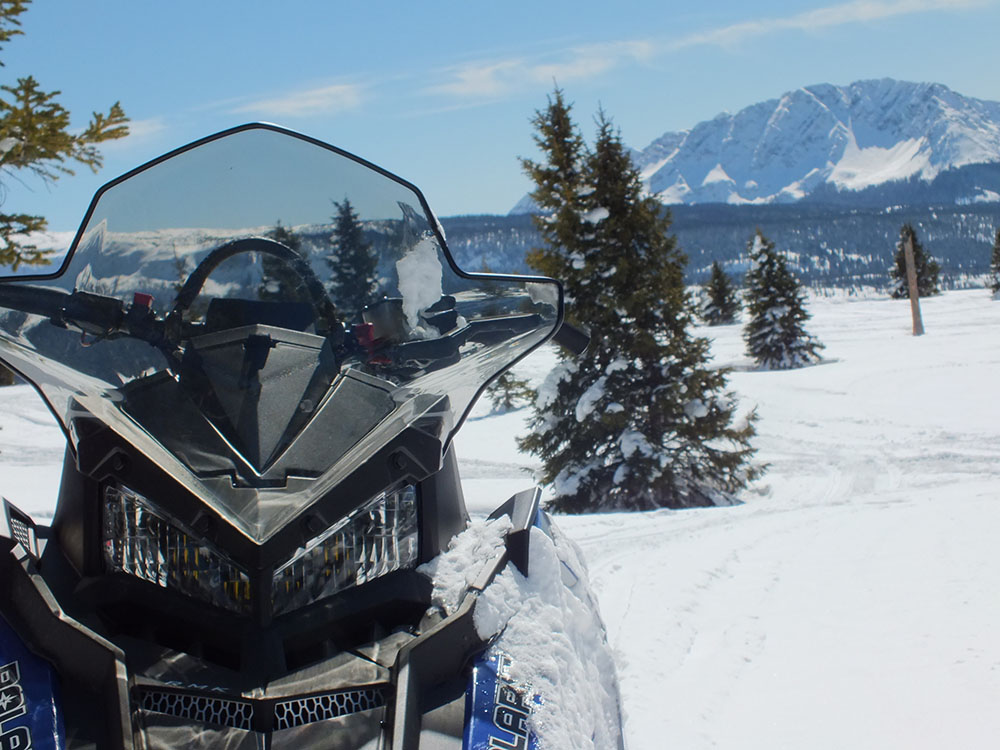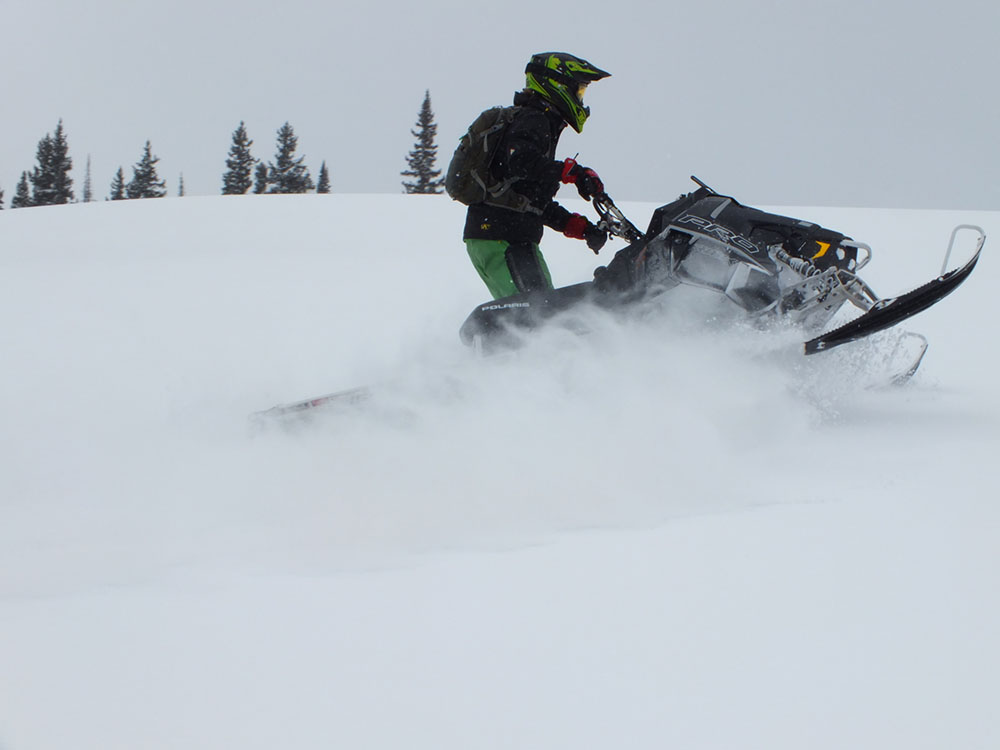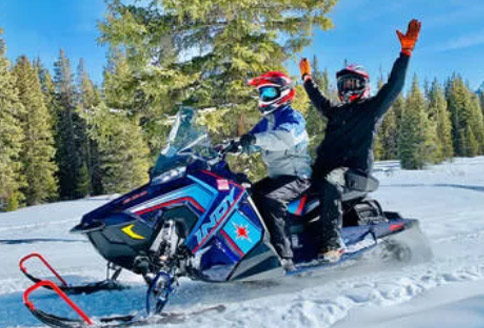For those who relish the crisp winter air and the thrill of exploring snowy landscapes, snowmobiling offers an unmatched adventure.
It’s not just a sport – it’s a unique way to experience the great outdoors during the colder months, connecting with nature in a way few other activities can.
What began as a practical mode of transportation in snowy regions has evolved into a popular recreational and competitive activity.
For beginners, the thought of controlling a powerful snowmobile might seem daunting. However, with the right approach, guidance, and respect for the machine and the environment, anyone can learn to enjoy this thrilling activity safely.
Here are some essential tips and tricks to help you learn how to ride a snowmobile, ensuring a fun and safe experience as you embark on your new adventure!
Choosing the Right Snowmobile
Selecting the appropriate snowmobile is a critical step for any beginner. With various models available, each designed for specific needs and conditions, it’s important to choose one that aligns with your skill level and the type of snowmobiling you intend to do.

- Type of Snowmobile: There are several types of snowmobiles, including trail, touring, mountain, utility, and performance models. Trail snowmobiles are ideal for beginners due to their lighter weight, ease of handling, and suitability for groomed trails. Touring models are designed for comfort and are great for longer rides, while mountain snowmobiles are for more experienced riders tackling deep snow and steep terrains. Having the best snowmobile for the conditions can be a game changer.
- Engine Size: Snowmobile engines are measured in cubic centimeters (cc), indicating the engine’s volume. Beginners should start with a lower cc engine, as they are easier to handle and offer sufficient power for learning.
- Weight and Size: A lighter and smaller snowmobile is generally easier for beginners to maneuver. It’s crucial to feel comfortable with the size of the machine, as controlling it becomes more challenging with increased size and weight.
- Comfort and Ergonomics: Comfort is key, especially for longer rides. Look for a snowmobile with a comfortable seat, easy-to-reach controls, and suitable handlebar height. Ergonomics play a significant role in reducing fatigue and enhancing the riding experience.
- New or Used: For beginners, a used snowmobile might be a more budget-friendly option. However, it’s important to ensure that the machine is in good condition. If opting for a new snowmobile, consider models that are specifically designed for beginners.
- Safety Features: Safety should never be compromised. Look for snowmobiles with features like good headlight illumination, emergency shut-off switches, and responsive brakes.
In summary, choosing the right snowmobile involves considering the type of riding you’ll be doing, the engine size, the machine’s weight and size, comfort, whether to buy new or used and the safety features. Your choice will significantly impact your learning experience and enjoyment of the sport.
Understanding Snowmobile Controls: A Beginner’s Guide
Familiarizing yourself with the controls of a snowmobile is a fundamental step in becoming a proficient rider. Here’s a breakdown of the essential controls:
Throttle
Located on the right handlebar, the throttle controls the engine’s power and speed. Squeezing the throttle makes the snowmobile faster while releasing it slows your speed.
Brake
The brake lever, found on the left handlebar, is used to slow down or stop the snowmobile. It’s important to practice using the brake smoothly to avoid abrupt stops.
Handlebars
The handlebars are used to steer the snowmobile. They require a firm grip and subtle movements, as oversteering can lead to loss of control.
Kill Switch
This safety feature immediately shuts off the engine when activated. It’s usually a red switch located near the throttle.
Starter
Snowmobiles have either an electric push-button starter or a pull-start mechanism to start the engine.
Headlights and Taillights
Like any vehicle, snowmobiles are equipped with headlights and taillights for visibility. Ensure they are functioning properly before every ride.
Fuel and Oil Gauges
Keep an eye on these gauges to monitor your fuel level and oil, ensuring you don’t run out on the trails.
Understanding and becoming comfortable with these controls is essential for safe and enjoyable snowmobiling. Take time to familiarize yourself with your machine’s specific controls and features, as they can vary between different models.
Basic Snowmobile Riding Techniques
Mastering basic riding techniques is crucial for safe and enjoyable snowmobiling. As a beginner, focusing on the fundamentals will help you ride a snowmobile with confidence and skill. Here are key techniques to practice:
- Starting and Stopping: Learn to start your snowmobile smoothly and to stop gradually. Avoid sudden stops unless in an emergency.
- Turning: To turn, lean in the direction of the turn and gently steer the handlebars. Your body weight plays a crucial role in navigating turns, especially on uneven terrain.
- Balancing: Maintain a balanced posture. Keep your feet firmly on the running boards and your hands on the handlebars. Adjust your body weight as needed when riding over bumps or making turns.
- Throttle Control: Practice modulating the throttle for smooth acceleration and deceleration. Avoid abrupt throttle changes which can lead to loss of control.
- Riding Uphill and Downhill: When ascending, lean forward and keep a steady throttle. During descents, lean back slightly and use a controlled speed.
- Riding in Powder: Riding in deep snow requires a slightly different approach. Keep a steady pace and use subtle weight shifts to maintain balance and direction.

Exploring Different Snowmobile Riding Positions
Riding a snowmobile skillfully requires understanding and using various riding positions based on the terrain and situation. Each position offers unique benefits and challenges.
- Sitting Position: As the most common and safest riding position, especially on trails, sitting allows for stability and control. Your feet should be flat on the running boards, with toes forward in the footwell. This stance helps absorb bumps and facilitates leaning into turns or shifting weight for steering. Sitting is especially recommended at high speeds for safety.
- Standing Position: Gaining popularity among mountain snowmobile riders, the standing position offers better control in certain scenarios, like ascending steep hills (lean forward) or when visibility is limited in the sitting position. This stance is also advisable when crossing roadways for better visibility. Keep your knees bent to absorb shocks from uneven terrain.
- Kneeling Position: Kneeling on the snowmobile’s seat, with both knees under you and hands firmly on the handlebars, can offer a restful alternative and improved visibility. It’s essential to maintain a slower speed in this riding position as the balance can be more challenging with neither foot on the running boards.
- Semi-Kneeling Position: In this position, one knee is on the seat while the other foot is on the running board. It’s particularly useful for deep powder days and enhanced visibility. The ‘plant leg’ should be on the uphill side for side-hilling off-trail. It provides a higher vantage point than sitting but requires careful control, especially if encountering bumps.
- Posting Position: A semi-standing stance where your feet are slightly forward on the running boards and your body is above the seat, with all your weight resting on your feet. This position is beneficial over uneven terrain or for descending steep hills by leaning backward. It helps with visibility issues and allows for better control over rough patches.
- Side-Hilling Position: A combination of standing and semi-kneeling, with both feet on one running board (uphill side), allowing the rider to lean off the seat into the hill for better control and maneuvering. This position is particularly effective for crossing steep hillsides or mountainous slopes but requires reduced speed and a firm grip for stability.
Each of these positions plays a vital role in handling a snowmobile effectively. Mastering them enhances not only the rider’s control over the machine but also contributes to a safer and more enjoyable snowmobiling experience. Remember, the key is to adapt your stance to the terrain and conditions you encounter.
Snowmobiling Etiquette: Sharing Trails Responsibly
Snowmobiling isn’t just about mastering the machine and the terrain; it’s also about respecting other riders and the environment. Practicing good snowmobiling etiquette ensures a pleasant experience for everyone on the trails.

Firstly, always adhere to trail rules and regulations. These are in place not just for your safety but for the conservation of the areas you’ll be exploring. Respect all terrain closures and private property to protect the surrounding wildlife and vegetation. Speed limits and other signs are there for your safety, so follow them diligently.
Be mindful of other snowmobilers and outdoor enthusiasts. Keep to the right side of the trail and pass with caution, signaling your intentions to others. If you’re riding in a group, maintain a safe distance between snowmobiles to avoid collisions.
Remember, snowmobiling is a community activity. Be courteous and friendly to fellow riders and offer assistance if you encounter someone in need. Leave no trace behind – this means taking all your trash with you and respecting the natural beauty of the snow-covered landscapes.
Weather Considerations for Snowmobile Riders
Weather plays a significant role in snowmobiling. Before heading out, check snow conditions and the local weather forecast.
Conditions in winter can change rapidly, and being prepared is key to a safe outing.
In deep powder days, you might want a specific mountain sled meant for big snow. Heavy snow regions in the west might require specific mountain sleds to best navigate the terrain.
In extreme cold, the risk of frostbite and hypothermia is real. Dress appropriately in layers and always have a backup plan in case the weather worsens. Be aware of signs of frostbite and hypothermia, and know how to respond if symptoms arise.
Blizzards and snowstorms can reduce visibility and make navigation challenging. If you’re caught in bad weather, it’s often safer to find shelter and wait it out rather than try to ride through it. Always inform someone of your planned route and expected return time, and carry a charged cell phone or a satellite communication device for emergencies.
In addition to cold, watch for avalanche conditions when riding in mountainous areas. Educate yourself about avalanche safety, and consider carrying avalanche rescue equipment if you’re venturing into high-risk areas.
Maintenance and Care of Your Snowmobile
Taking care of your snowmobile will not only prolong its life but also ensure your safety on the trails. Regular maintenance checks and proper care are essential.
Start with the basics: regularly check your snowmobile’s fluid levels (oil and coolant) and refill as needed. Inspect the belts, brakes, and spark plugs for wear and tear, replacing them when necessary. The track and skis also require frequent checks, especially for any damage or excessive wear.
After each use, clean your snowmobile to remove any ice, snow, or debris. This helps prevent rust and keeps your machine in good working condition. Also, store your snowmobile properly when it’s not in use, ideally in a dry, covered area to protect it from the elements.
Remember, a well-maintained snowmobile is a reliable one. If you’re not comfortable performing maintenance tasks yourself, have a professional service your machine regularly. This not only ensures your safety but also enhances your overall snowmobiling experience.
Finding Snowmobiling Communities and Training Resources
Embarking on your snowmobiling journey can be more enjoyable and enriching when you connect with others who share your passion. Snowmobiling communities and clubs are fantastic resources for beginners.
They offer opportunities to learn from experienced riders, participate in group rides, learn local laws, and even get involved in local events and conservation efforts.
Many clubs also provide a safety course for beginners, covering everything from basic riding skills to safety and maintenance. These sessions can be invaluable in building your confidence and competence on the snow.
Additionally, online forums and social media groups are great places to seek advice, share experiences, and stay updated on snowmobiling news and events. Engaging with these communities not only enhances your skills but also helps in building lasting friendships and connections within the snowmobiling world.
Common Mistakes and How to Avoid Them
As with any new activity, beginners are prone to making mistakes. Being aware of these common pitfalls can help you avoid them:
- Overconfidence: Don’t overestimate your abilities, especially in challenging conditions. Stick to trails and speeds that match your skill level.
- Neglecting Safety Gear: Always wear appropriate safety gear, regardless of the distance or familiarity of the trail.
- Poor Posture: Proper posture is crucial for control and balance. Avoid slouching or leaning too far in any direction. You may want to stand at times to avoid always riding in the sitting position.
- Ignoring Trail Etiquette: Respect other trail users and follow the rules. This includes riding at safe speeds and not littering.
- Skipping Pre-Ride Checks: Always perform a pre-ride check on your snowmobile. This includes checking the fuel, oil, brakes, and lights.
By being mindful of these common errors and actively working to avoid them, you can ensure a safer and more enjoyable snowmobiling experience.
Planning Your First Snowmobiling Adventure: Tips and Tricks
Planning your first snowmobiling adventure can be as exciting as the ride itself. Here are some tips to help you get started:
- Choose the Right Trail: Start with easy, well-marked trails. Research the trail beforehand to ensure it matches your skill level.
- Check the Weather: Always check the weather forecast before heading out. Avoid going out in extreme weather conditions.
- Inform Someone: Let someone know your planned route and expected return time.
- Pack Smart: Bring essentials like water, snacks, a first aid kit, and an emergency repair kit.
- Stay Hydrated and Energized: Keep hydrated and have snacks handy to maintain your energy levels.
- Take Breaks: Don’t push yourself too hard. Take breaks to rest and enjoy the scenery.
Your first adventure is about learning and enjoying the experience. Take it slow, be prepared, and most importantly, have fun!

